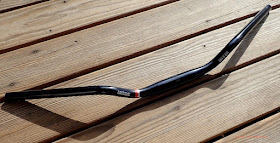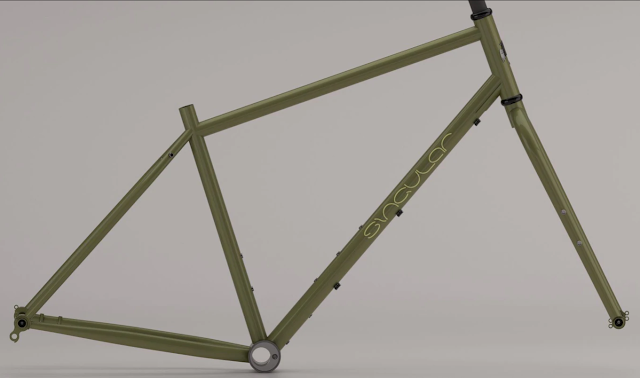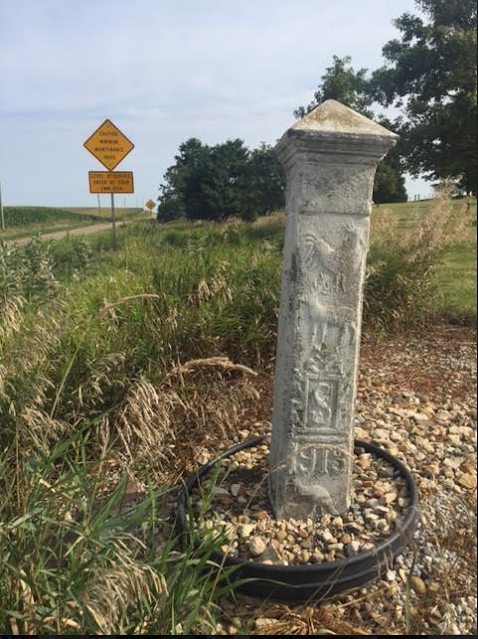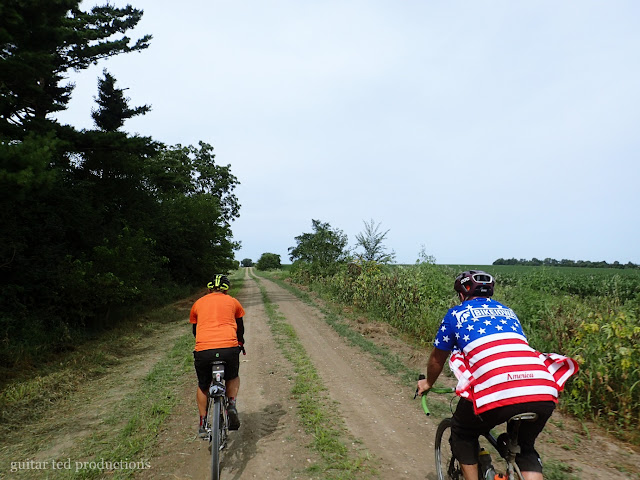 |
| The new Wilde X Country Bar |
Note: Wilde Bikes sent the X Country Bar over to me for test and review at no charge. I am not being paid, nor bribed, for this post.
Wilde Bikes recently asked me if I wanted to review their new handlebar, the Wilde X Country Bar. It's a funny thing, because in my brain for several days I was thinking that this was the "X" then "Country Bar". Like "ex country bar". Not "cross country bar" as is probably intended.
My brain doesn't necessarily work like everyone else's does, clearly!
Anyway, following are the specs on the handlebar I was sent:
- 50mm Rise
- 27° Back Sweep
- 7° Up Sweep
- 800mm Wide
- 31.8mm Clamp
- Weight: 420g
- Heat Treated Aluminum
- Made in Japan
- The Country Bar is rated for off-road touring, it's not meant to be an enduro bar, ride accordingly
Interesting, yes? Not an enduro bar. Made for off-road touring, eh? Okay then. So like bikepacking, I suppose. It's wide, for sure, so your bar bag will rest in there nicely. That rise puts you in a more relaxed position, perhaps, and so you are going to be more comfortable here. Maybe. That all depends upon how you set your bike up.
Nitto. If you are a "bike nerd" Nitto needs no introduction. But let's say you haven't gotten a clue as to who Nitto is. That's okay. Here ya go...
From their website; "Nitto is a bicycle parts maker specializing in metal tube production"
Yes, but..... Nitto is THE handlebar company when it comes to handlebars. Their handlebars have a cult-like status, a fine "glow" to them. (Especially the silver ones) They feel different. They just do. It's very hard to articulate the quality that exudes from a Nitto made product, but it is there.
Nitto is a Japanese company, and they got their name in cycling via track cycling, which if you did not know, is a really big deal in Japan. Of course, track bikes are fixed gear bikes, and you know what? Wilde Bikes founder, Jeffrey Frane, helped to start up All City Bikes (R.I.P), and that company was heavily into fixed gear and track bikes in the beginnings of that brand. So..... maybe that has something to do with Wilde Bikes sourcing this handlebar from Nitto? Perhaps.
I've gotten busy setting this thing up and I will have a review coming soon. Stay tuned....
 |
| Image courtesy of Moots |
This week was a weird week. SRAM comes out with "Powertrain" and the internet loses its mind and the debate about electrified, HPC vehicles burns brighter than the Sun. They aren't "real" bicycles! It just isn't the same as 100% human powered bikes!
Then I post about single speeds, do a podcast about them, and the place goes nuts. I get comments, questions, seekers, fans, and pundits coming on giving their two cents.
On one hand you have the cutting edge of bicycle technology now, which is pretty much an electrified take on what has happened with internal combustion engines and bicycles from the early 20th Century. Bicycles were very popular, but motorcycles were easier, went further, and didn't make you work as hard mentally either. You just twisted a throttle, figured out how to stop, and went forward. None of the human efficiencies and physical fitness stuff had to be a concern.
SRAM went as far as calling the 100% human powered aspect of cycling a "mundanity" (Their word) and that Powertrain allowed you to "escape" that. Yet here I had a few thousand people from the podcasts and the blog getting excited over the simplest type of bicycle ever.
I'm not here to say that one is better than the other. I am saying that electrified bikes are going to be less human powered/controlled going forward. Of course it won't be anything like 100% human controlled and powered cycling. Why do we even try to conflate the two things? One will be rife with electronics and won't give a whit about taking anything away from the human aspect. The other won't have any of the trappings of technology's moving electrons and will rely more on the human element.
Both will thrive.













.JPG)
.JPG)
.JPG)
.JPG)
.JPG)
.JPG)































